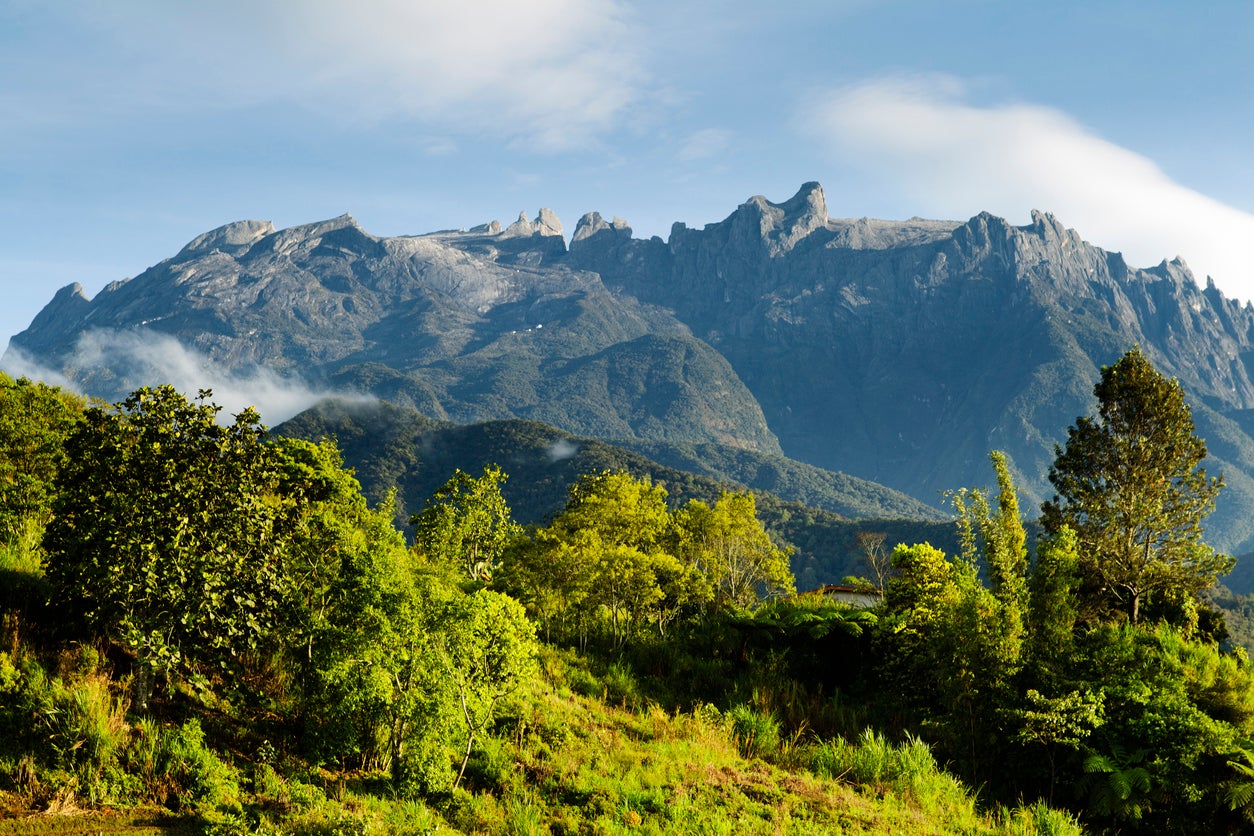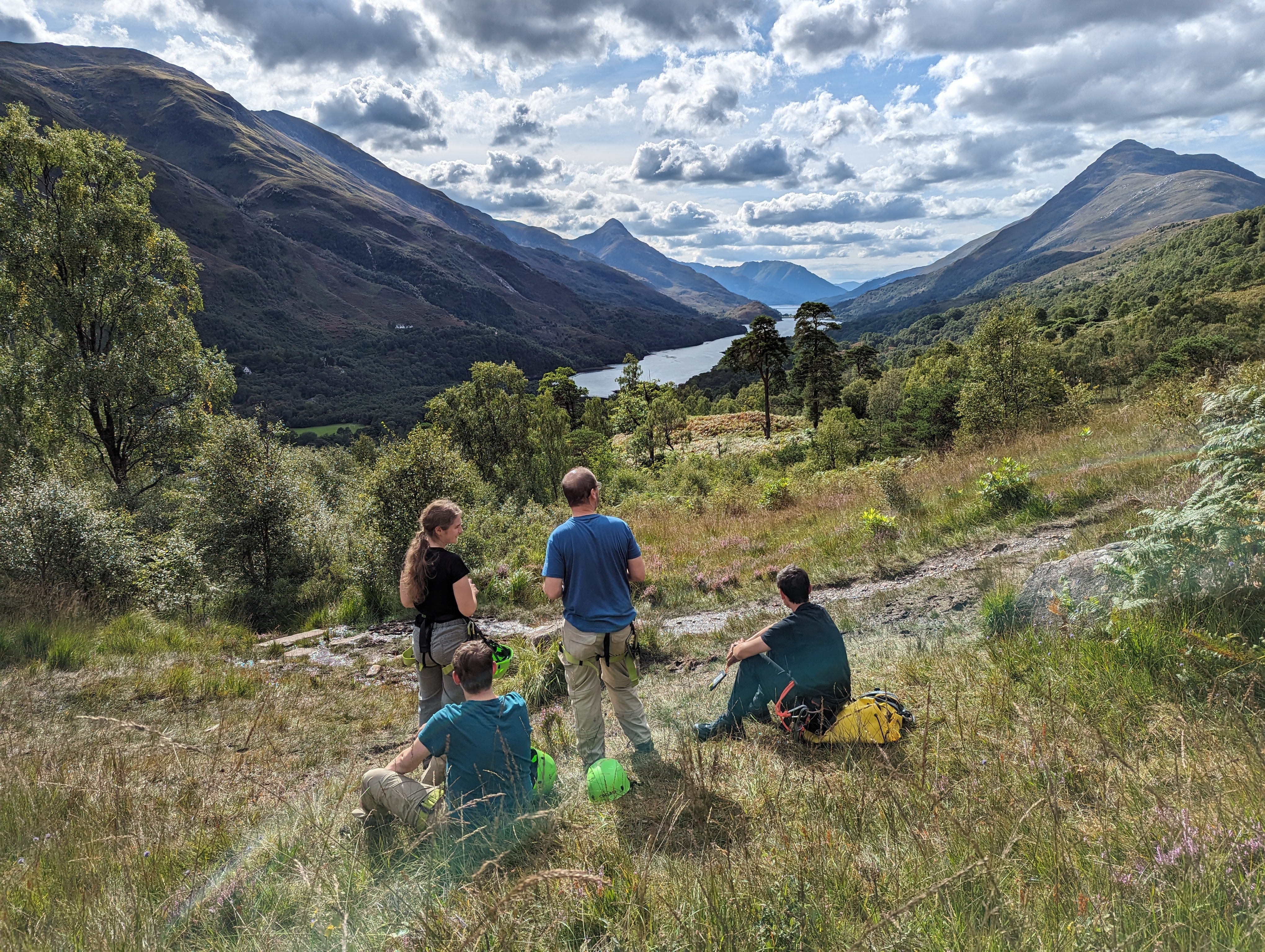The thrill of getting high on the rungs of Scotland’s only via ferrata
Despite via ferrata routes being around for centuries, Kirsten Henton was yet to tackle a climb – so what did she make of this towering route in the Scottish Highlands?

It was while wrestling with a harness in the Vertical Descents centre, gearing up to tackle Scotland’s only via ferrata, that I realised I was actually feeling nervous.
The route, open all year round, is pitched as “a wonderful high-altitude climbing experience” in Kinlochleven, Lochaber, long regarded as the outdoor capital of the UK and encompassing Glen Coe, Ben Nevis and Fort William.
Under the instruction of our guide, New Zealander Jay Campbell, we – three family members who were all via ferrata veterans, and me, a first-timer – strapped ourselves in tightly so that, as Jay said, “if you tip upside down, you don’t fall out.”
Scaling vie ferrate, Italian for “iron paths”, has proved a popular activity and can be found all over the world. Today there are some 3,000 vie ferrate worldwide, most found across the Alps, where there are around 700 in Italy alone.

The via ferrata course at the Anantara Al Jabal Al Akhdar Resort in Oman’s Hajar Mountains, which is 200 metres long and 2,000 metres high, is the highest in the Middle East. Mountain Torq, Asia’s first and the world’s highest, peaks at an eye-watering 3,776 metres as it ascends the northern rock face of Mount Kinabalu in Malaysia.
These routes are typically a mixture of cables, iron staples (rungs) and rods, bridges and ladders secured to sheer rock faces, enabling climbers to reach otherwise near-impossible precipices.
Read more on Scotland travel:
And these iron paths aren’t new. They have a centuries-old legacy in mainland Europe, having been used for practical purposes as well as recreational climbing, particularly in the 19th century when the trend for scaling new, unconquered heights was raging and people used rudimentary methods of chains and ropes to reach hair-raising peaks. They were also utilised during the First World War to move Italian troops between high-altitude points in the Dolomites.
The route at Kinlochleven is a little more modest. Consisting of 450 rungs and around half a mile of cable, it allows climbers to reach roughly 250 metres above sea level – still impressive, still dizzyingly high. But the real appeal lies in the course’s setting, which snakes up and over one of the region’s most impressive waterfalls, the Grey Mare’s Tail. A single drop waterfall, it spills close to 50 metres down into an enclosed, cavernous gorge with sheer rock rising on either side.

Jay ran through the instructions, emphasising the need to remain clipped on to the safety cable by one of the two carabiners dangling from our harnesses at all times. The safety cable, he explained, was bolted to the rock in sections and there to ensure that if we fell, it wouldn’t be far. At the end of each section, we were to scoop our two carabineers together and move them on to the next section of cable, one by one.
“I’ll mostly be setting you up and pointing you in the right direction,” he said as we walked the short distance through the town, towards the foot of the waterfall. Situated 10 miles southeast of Fort William, Kinlochleven evolved around the aluminium smelting industry and associated hydroelectric power at the beginning of the 20th century. As a result of the pioneering hydroelectric plant, it became the first place in the world in which every house had power, giving it the nickname The Electric Village. The smelting works have gone but tourists and hikers conquering the West Highland Way sustain the town at the eastern end of Loch Leven.
We headed into the dappled woodland, where a dusting of mist from the nearby cascade instantly cooled the air in the steep gorge. After some final checks, we were off along the short practice section not far from ground level, which took us to the start of the course in the gorge, towards the waterfall. Designed to get you used to the action of the carabiners, we navigated around a slippery, jagged rock, grasping for a hold while feet tracked along straight iron rods.

Looking up, I was struck with a bolt of adrenaline as I saw the iron rungs ascend the rock face – though I had to remind myself, hands slightly shaking as I clipped and unclipped my way along the first, entry-level section, that I was still no more than 20cm off the ground. A slip there would only have resulted in wet feet and hurt pride.
Having crossed the flow of water that eventually pours into Loch Leven, we were suspended on a wooden plank as Jay unlocked the protruding gate to the course proper. Going last, I waited, smiling ludicrously with anticipation, occasionally whipped by the swirling wind and spray from the plunging waterfall.
It didn’t take more than a few rungs to get into the swing of things. It was a rhythmic process, clipping and unclipping along the sections while planning where next to grip and put my foot. I surprised myself, confidently striding up a section and, while waiting to scale the next, turning away from the rock to see the water crashing below and the forest wrapping around the town in the distance.

At what appeared to be the top, a little spice was added with a single cable bridge across the water. I stepped out over the fall, elated as the water tumbled into the canyon beneath my feet. We exchanged pleasantries over the roar with a group of canyoners in wetsuits and took turns wobbling across the cable-cum-bridge and back again.
After a short zipline, further shimmying up rungs and around wet rock face into another enclosed waterfall-striped canyon, we met a sheer wooden ladder, which marked the end of the route. If the journey there wasn’t rewarding enough, the view from the top certainly was. I took an enormous breath in, and stood in awe of the flanking mountains as we stared down at Loch Leven, glistening in the sunlight.
It took just more than an hour to reach this point; the time, according to Jay, usually depends on the group size and ability. The company states that people should be “physically and mentally... comfortable in this sort of outdoor environment” and “comfortable with heights and exposure”, both of which I would underline. Good slip-proof shoes are essential, as is taking up the offer of the gripped gloves to protect your hands (no additional charge).
Back in the centre, I disentangled myself from my harness, hung up my helmet and sat still for a moment. A buzz from the experience pounded around my body, from my toes to my fingertips – it had been a thrilling climb. Having walked a trail above the canyoners at the top of the fall to head back down, I learned that there was an extension of the via ferrata course. I swiftly promised myself I’d be back to complete the circuit of the Grey Mare’s Tail waterfall – but next time, those nervous feelings I’d had before my first climb are sure to be replaced by an eagerness to scramble up high.
Travel essentials
How to get there
The Vertical Descents Centre is in Kinlochleven, Scottish Highlands (at the eastern end of Loch Leven). The closest train station is Fort William, which connects with Glasgow on the West Highland Line and can also be reached from London on the Caledonian Sleeper. From Fort William, the N44 bus takes around 45 minutes to reach Kinlochleven.
How to do it
Vertical Descents offers via ferrata guided climbs in Kinlochleven from £70 per person. Participants must be aged eight or over and at least 1.2 metres tall. verticaldescents.com
Read more on the best hotels in Scotland



Join our commenting forum
Join thought-provoking conversations, follow other Independent readers and see their replies
0Comments